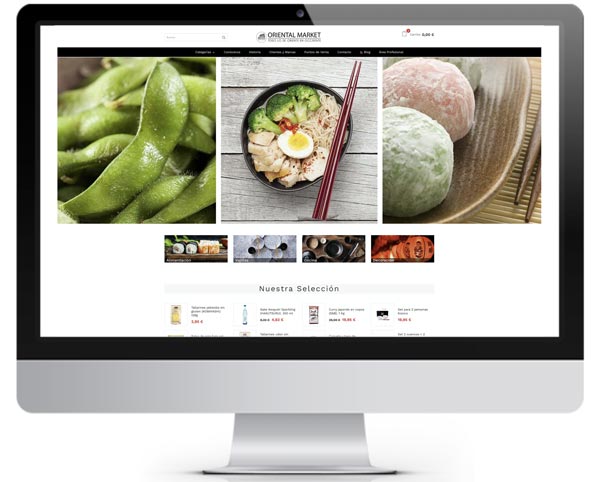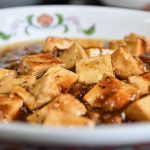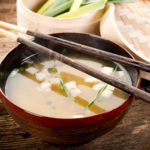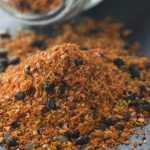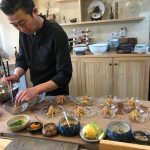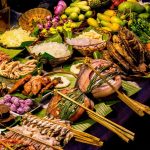Enoki: what they are, how to use them and health benefits

The enoki is a type of mushroom originating in Japan, also known by such suggestive names as velvet foot, golden needle or winter mushroom, although its real name is Flammulina velutipes, and it stands out for its flavour and unmistakable characteristics.
It is a thin, white, elongated mushroom, very popular in Asian cuisine, although it has been native to Japan for millennia and has been cultivated there for more than three centuries. Enoki has traditionally been used in Japan, China and Korea to make soups. Like most mushrooms, it was first harvested and then cultivated.
It was then that the growers observed that, by leaving the mushroom in a closed room, without light and with a high concentration of carbon dioxide, the mushroom also grew, but without the characteristic orange colour of its cap, which became noticeably smaller and white, softer for cooking and more attractive to the eye.
Nutritional properties and health benefits of enoki mushrooms
These small, elongated mushrooms are very valuable in Asian cuisine thanks to their mild, fruity flavour, and have also long been used in traditional medicine as a remedy for liver disease, digestive disorders, cholesterol and cancer, as well as to regulate blood pressure.
Their low calorie content – 44 kilocalories per 100 grams – together with their elongated outline, allows the mushrooms to be used as a substitute for pasta or as one of the main ingredients in vegan dishes and low-calorie diets.
In addition, Enoki is rich in fibre, B vitamins, vitamin D and essential minerals such as potassium, iron and phosphorus. It is also high in antioxidants and ergothioneine, a natural amino acid that helps delay or prevent cell damage caused by UV rays or free radicals. And like many other mushrooms, enoki is notable for its high beta-glucan content, which has the ability to strengthen and regulate the immune system.
In 2009, the scientific journal Immunology published studies showing that ingestion of enoki mushroom extracts significantly improved survival rates in rodents previously infected with human papillomavirus, the leading cause of cervical cancer.
Kitchen uses of enoki mushrooms
Enoki mushrooms are quite delicate and only keep fresh and intact for 3-4 days in the refrigerator. Thanks to their fresh, sweet taste, versatility and easy preparation, they are ideal for cooking, which is why their consumption has spread from Asia to the West. They are usually sold in bunches, so just cut off the base to separate them and wash them before cooking.
They can be prepared in different ways, either cooked in a frying pan or raw for salads, but also boiled or baked. Enoki require little cooking time and combine perfectly with meats, vegetarian dishes, seafood and, as mentioned above, as an ideal substitute for pasta. Of course, they are also very suitable for steaming or for making tasty stir-fries with other vegetables. They can also be added to stir-fries, omelettes, soups, risottos and curries. One of the culinary benefits of these mushrooms is that their flavour combines well with many other ingredients, making dishes tastier. Due to their characteristics and their quick cooking time, it is best to add the enoki mushrooms at the end of the preparation, as this is enough for them to cook and keep their flavour and properties intact.
Other information of interest
Wild varieties of enoki can be found in late autumn and during the winter months, when temperatures begin to drop more significantly and there is more rainfall. Cultivated enoki mushrooms, on the other hand, can be found at any time of the year. In Spain, they are sold in shops specialising in Asian food, although it is increasingly common to find them in conventional vegetable stalls. They are also sold canned, although they lose their flavour and their texture becomes more gelatinous.
More and more studies are being published on enoki and its benefits. Here is a list, by way of conclusion, of its many benefits for our bodies:
- Improves the digestive tract.
- Strengthens the immune system and reduces stress.
- Decreases intestinal fat.
- Prevents the risk of anaemia.
- Lowers blood pressure.
- Prevents some allergies.
- Prevents the risk of diabetes.
- Lowers cholesterol.
Furikake: what it is, how to use it and where to buy it
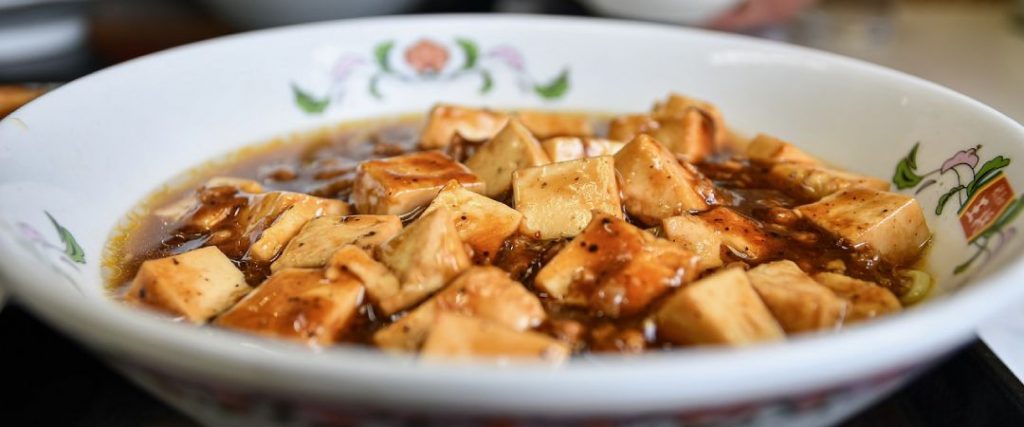
Many Japanese ingredients and recipes have been successfully introduced into Western cuisine, such as sushi, sukiyaki and soy sauce. However, Japanese cuisine hides other lesser-known gastronomic treasures, such as furikake, one of the most widely used condiments in the Land of the Rising Sun.
Although its origin is relatively recent, furikake has become one of the staple ingredients of Japanese cuisine, with a number of variations. Furikake is ideal for enhancing the flavour of many dishes, and it is such a versatile seasoning that it can be used in almost any recipe, even if it is not of Japanese origin. Best of all, it’s so easy to make your own homemade mixture.
What is furikake, the seasoning that is sprinkled on the ground
The Japanese word furikake comes from the verb furikakeru, which, translated into English, means to sprinkle. This name perfectly defines the purpose of this dry seasoning, which is sprinkled directly on dishes as a spice, especially on white rice, but also on stews, soups, fish and pasta.
The most widespread variant is made with dehydrated nori seaweed, toasted sesame seeds and dried fish, usually tuna. It also usually contains sugar and salt, so its taste is somewhere between sweet and salty, and its crunchy texture is one of its main characteristics. But it can actually incorporate many other ingredients, such as dried prawns, shiso leaves, roe, miso, green tea, chilli, kombu seaweed and different varieties of fish.
Commercially available furikake variants are also available with flavour enhancers and flavourings, or versions based on a predominant ingredient, as well as regional varieties and even gourmet furikake in luxury packaging for a more discerning audience.
As a dry product with a very concentrated flavour, it is packaged in small packages and is often used as a spice, although there are now variants with a wetter texture, but they have a shorter shelf life. The classic dry-textured furikake can be kept for long periods of time at room temperature, although it is important to remember that they gradually lose their aroma.
Buy furikake online
In our online shop you will find everything you need to enhance the flavour of your dishes with furikake.
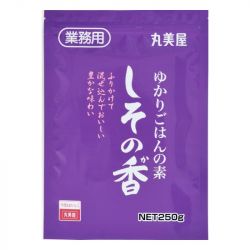
Furikake lila Shisonoka (MARUMIYA) 250 g
17,9512,57 € (30,00 %)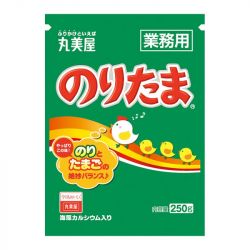
Furikake Noritama-Algas (MARUMIYA) 250g
15,74 €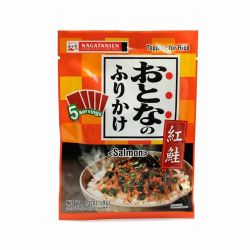
Furikake Hon Benisake-salmon (NAGATANIEN) 5 sobresx1.8g
2,70 €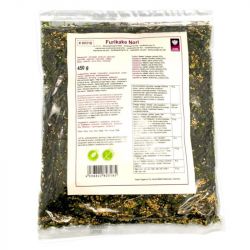
Furikake Nori (GLOBE GOURMET) 450g
16,95 €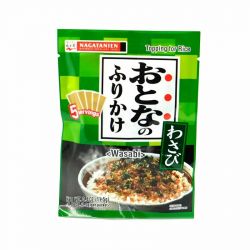
Furikake Hon Wasabi (NAGATANIEN) 5 sobresX2.3g
2,70 €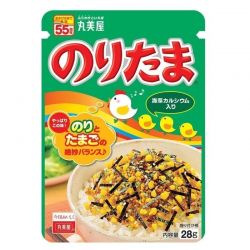
Preparado para arroz Furikake Noritama (MARUMIYA) 28g
2,391,67 € (30,00 %)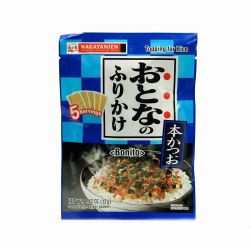
Furikake Hon Katsuo-Bonito (NAGATANIEN) 5 sobres-2.4g
2,70 €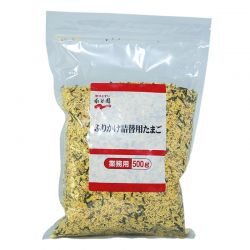
Preparado para arroz Furikake Tamago (NAGATANIEN) 500g
19,4213,59 € (30,00 %)
© Diseño web imacreste
A brief history of furikake, a brilliant way to combat a lack of calcium
The origin of furikake dates back to the early 20th century (1912-1926) on the southern Japanese island of Kyushu.
At a time when Japan was undergoing a process of social and economic transformation, there was a lack of basic foodstuffs for much of the population. The deficient diet led to a worrying lack of calcium, especially among children.
It was then that the pharmacist Suekichi Yoshimaru came up with the idea of preparing a seasoning to add more nutrients to one of Japan’s staple foods, rice. His idea was to grind dried, whole fish and combine it with roasted seeds and seaweed. In this way, the rice was greatly enriched with calcium, and it was easy for young children to eat, as the seeds and seaweed camouflaged the fishy taste.
Yoshimaru named his seasoning Gohan no Tomo (“friend of rice”) and it soon became very popular among the Japanese population. This “friend of rice” can be considered the true forerunner of today’s furikake.
Uses of furikake in Eastern and Western cuisine
Unlike other more exotic Japanese dishes, furikake fits perfectly into Western cuisine, as it does not require any special knowledge of Japanese culinary culture. It can be thought of as a spice mixture that almost everyone has at home, so it is easy to experiment with its preparation and seasoning.
However, the most traditional use of furikake is as the final seasoning for cooked rice, either on its own or as part of more complete dishes such as poke or chirashisuzhi. In its country of origin, it is also used to sprinkle on rice triangles and rice balls (omusubi or onigiri), pasta dishes, soups, fried or boiled eggs, curries, tofu, grilled fish, etc.
Furikake is best added to hot dishes so that the warm steam enhances the flavour and helps to absorb the ingredients. However, it can also be added to cold dishes for an appetising crunchy texture. For example, in salads of all kinds.
Another good option for those who love its flavour is to use it as an ingredient before preparing a dish. For example, it can be added when beating eggs to prepare an omelette, in the broth of a stew or consommé or in the minced meat mixture for hamburgers, pasta or meatballs, among many other alternatives.
Its use in the United States is becoming increasingly popular and it is now common to season pizzas, French fries, hot dogs and even popcorn with furikake.
Best Japanese restaurants in Malaga
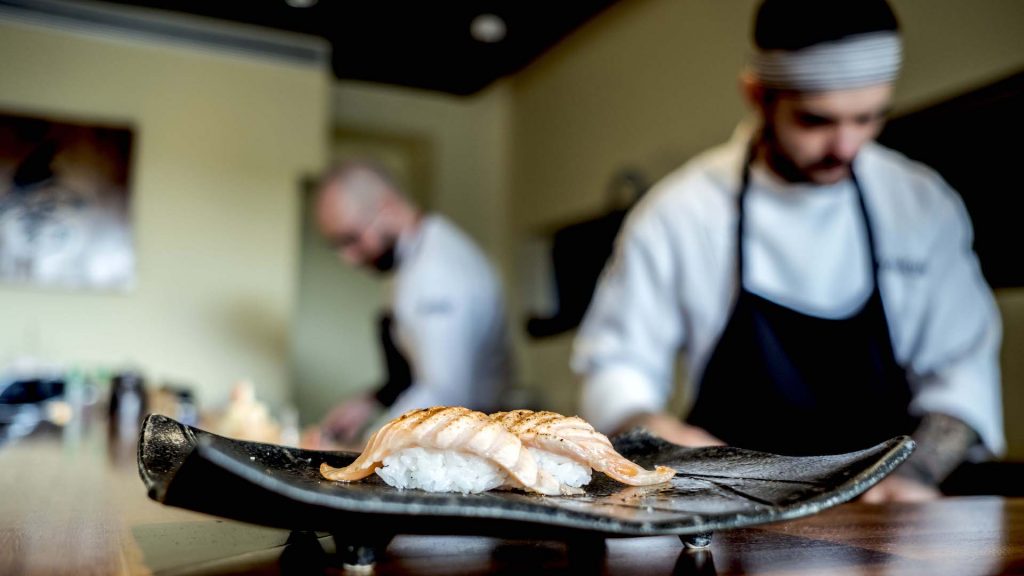
Malaga, an Andalusian coastal city, now also combines its Mediterranean culture and gastronomy with Japanese philosophy and ethics. An increasing number of Asian restaurants are making a name for themselves in the Andalusian capital. Food such as rice, sushi, ramen, mochis, among other dishes, combine perfectly with the typical tapas or Spanish wine. The landscape is transformed to offer a modern fusion of two cultures with a long history.
Japanese cuisine has won a place in the hearts of the people of Malaga, so much so that here are the best restaurants in the city.
List of the best Japanese restaurants in Malaga
Japanese fusion and local gastronomy:La Sole del Pimpi
Zegri Street, 4 Jardines Alcazabilla
Telephone: 952 22 89 90
A place where everyone repeats! La Sole del Pimpi, a restaurant located in the hustle and bustle of Malaga, prepares its dishes following the Japanese tradition, adding little touches of Mediterranean gastronomy. Once inside, let yourself be advised by Marcelo and Miguel, La Sole’s waiters, their recommendations never go unnoticed among customers and the treatment is unbeatable. The restaurant is also available for business dinners, events and birthdays. Come to La Sole and enjoy exquisite cuisine: red tuna tataki, Andalusian tartar, Malagueta prawns, futomaki crocanti, almadraba nigiri, tempura del Guadalhorce and much more!
Traditional Japanese tavern: Sake Izakaya
San Juan de Letrán, 4
Telephone: 611 450 445
In the centre of the capital you will find one of the most traditional Japanese restaurants… Sake Izakaya! Come and visit it at its new location: San Juan de Letrán, number 4. The tavern, inspired by the Japanese country, cooks all kinds of dishes, but we especially recommend: house salmon, sake, Iberian prey, miso soup, pumpkin tempura, sea bass, tuna tataki… Enjoy this gastronomic experience with fresh products at the best quality. In Sake Izakaya they are experts in fish and in their technique and elaboration, they get the maximum flavour of each food to delight your palate.
Sensitivity to Japanese cuisine: Takumi
Mundo Nuevo Street, 4
Telephone: 952 06 00 79
Did you know that the restaurant has been awarded a Michelin Dish for its quality cuisine? Moreover, it is called Ta-Kumi because of its meaning: “artisan” and “master”. These words refer to the spirit of the place and the union of the chefs, Toshio and Álvaro (TA), in a single team (KUMI). Their dishes are prepared under the guidelines of Japanese gastronomy, you can find: egg nigiri, urta sashimi, truffle or scallop nigiri, butterfish teppan yaki, salmon temaki, among other delicacies! The price is high, but the place requires it, due to its technique and quality raw materials.
For sushi lovers: Restaurante Haruki
Avenue Pries, 4
Telephone: 951 95 50 76
Explosion of flavours! Haruki restaurant manages to create a Japanese atmosphere in the city of Malaga. It takes care of every detail, from the decoration to the plating, to offer the best experience. Haruki’s food takes you to the incredible gastronomy of Japan, where you can try all kinds of dishes: tuna tataki, gyozas, different uramakis, eel bao, pumpkin roll, massaman curry, as well as dessert, especially mochi or green tea ice cream cake, among many other combinations… Its impeccable presentation and passion for sushi will leave you wanting more!
Chill atmosphere: Sibuya Urban Sushi Bar Málaga
Granada Street, 36
Telephone: 951 55 00 55
Do you want to disconnect from reality? Then don’t hesitate to enter Sibuya Urban Sushi Bar! The restaurant, known as “peaceful place”, combines Japanese technique with avant-garde innovation. Its dishes reflect this desire to modernise Japanese cuisine, whether it’s Rock and Roll, Sibuya Flamed, Sibuya Roll, Gunkan Lovers or Duo Avocate… You can enjoy this gastronomy in a calm and relaxed atmosphere. Sibuya’s main goal is for its customers to recharge their batteries while sharing delicious sushi!
Specialising in ramen: Kosei & Lova
Carretería Street, 56
Telephone: 952 75 63 61
For ramen lovers… This is your place! Kosei & Lova offers one of the best ramen in Malaga. You can enjoy different types: Tantanmen, containing chicken, pork and sesame based broth, intense but spicy flavour; Shoyu Ramen, chicken and fish based broth, mild and light, one of the oldest ramens in Japan; Miso Ramen, chicken and miso based broth, typical in the north; Tsukemen, a dish with different toppings and finally; Mazesoba, ramen noodles with assorted vegetables, poached egg and negi miso sauce, option with meat. All these delicious dishes are available at kosei & Lova. What are you waiting for to fall for the best ramen in town?
Innovative sushi: Restaurante Asako
Avenue Plutarco, 42
Telephone: 952 21 40 60
Crispy salmon lasagna, butterfish nigiri flambéed with truffle? The Asako restaurant is constantly innovating, offering its customers a wide variety of dishes: uramaki spicy maguro, brown sugar flambé, gunkan hotategai, flambéed scallop nigiri with Japanese bilbaína, among other specialities. Restaurant with ambient music, spacious and with the option of a terrace. It never ceases to surprise with its new flavours and recommendations. If you want a new experience with fusion cuisine, don’t hesitate to book a place at Asako.
Japanese cuisine is gaining fame in all cultures, nowadays having udon for dinner or rice with seaweed for breakfast is the order of the day. In Oriental Market we sell products such as: Japanese seaweed, sake, soy sauce, mochis, teriyaki sauce… directly to many restaurants in Malaga. Our products are imported from Japan and you can buy them in our online shop. Surprise your friends cooking uramakis with Oriental Market ingredients.
Benefits of miso soup
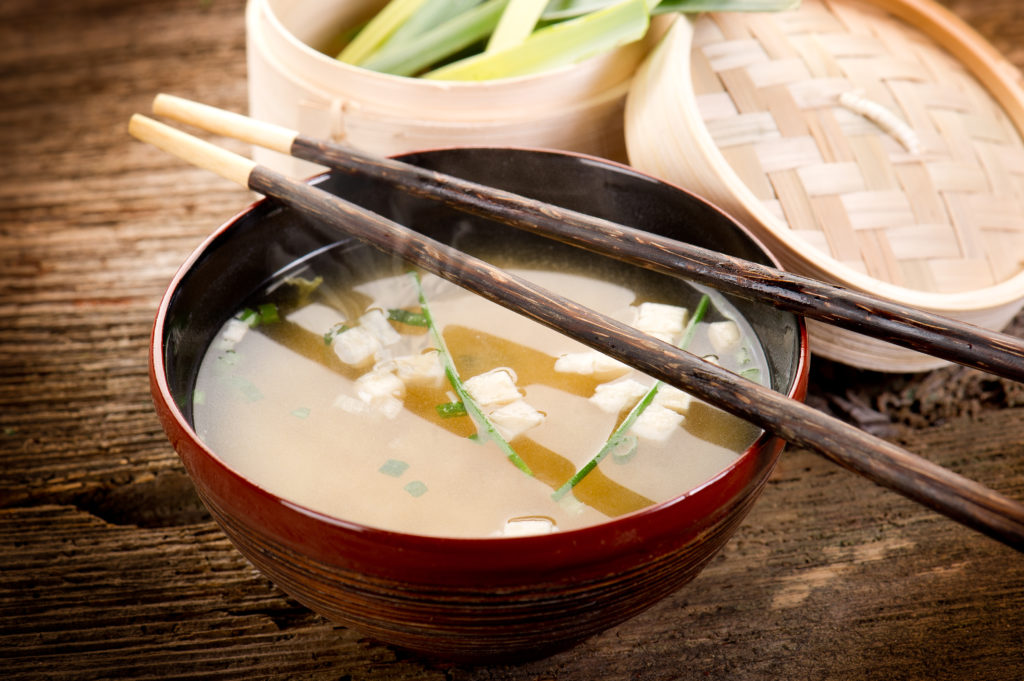
After the holidays and the eternal New Year’s Eve meals, one of the most mentioned resolutions for 2022 is to keep in shape and start a healthy diet. That’s why, from Oriental Market, we bring you the Asian detox solution to achieve it: miso soup.
The main characteristic of Asian cuisine is that it uses many cleansing components, which is why it is considered one of the healthiest diets, followed by the Mediterranean diet. Dishes are free of saturated fats, food is steamed, boiled or sautéed with very little oil. They incorporate almost no dairy products, but a large amount of eggs, fish, poultry and seafood as the main source of energy. In addition, they are generally characterised by very little sugar in their desserts (apart from fruit), and vegetables and pulses play a key role.
To celebrate the start of the new year, the gastronomic influencer Sue Moya prepared a miso soup recipe step by step for the programme Directe Catalunya on 8tv in the new Take Away corner of Oriental Market, where she explained all the benefits that this simple dish can bring to our organism.
What are the benefits of miso soup?
Miso soup is a cleansing dish that helps our entire system and its consumption has the following positive benefits:
Controls high cholesterol levels: Miso contains soybeans rich in lecithin, a plant-based substance that helps to strengthen blood vessels and reduce cholesterol. Also, thanks to its component of omega-3 and healthy fats, it helps to regulate high cholesterol levels.
Supports digestive processes: The fermentation process in miso production promotes levels of beneficial bacteria, known as probiotics. These bacteria are believed to help a variety of health problems, including digestion and intestinal health. Its high content of digestive enzymes and fibre helps to balance the intestinal flora and regulate the digestive system.
Regulates cardiovascular disease: Miso soup may reduce the risk of death from heart disease. Un estudio mostró que los niveles más altos de isoflavonas (un tipo de suplemento nutricional que se encuentra en la familia de las leguminosas) se correlacionaron con un menor riesgo de accidentes cerebrovasculares y ataques cardíacos en algunas mujeres japonesas.
Improve immune function: As a rich source of probiotic bacteria, miso may support immune function and help fight infection. El consumo regular de una variedad de alimentos fermentados como el miso puede minimizar su necesidad de terapia con antibióticos para combatir infecciones. Aun así, se necesitan también más estudios para evaluar dichos beneficios.
Reduces allergies and cancer: Persistent consumption of miso is thought to potentially reduce the risk of certain types of cancer, including breast cancer. Esto se debe al contenido de isoflavonas de la pasta. El miso también es una rica fuente de antioxidantes protectores que pueden respaldar aún más su función protectora en esta área, factor que reduce la vejez. Sin embargo, se necesitan aún más estudios.
Improves mental health: Recent advances in gut-brain connectivity support the recipe of miso soup and, in particular, the consumption of fermented foods in cognitive health. Its consumption helps reduce anxiety and depression. Also, soy is known to contain acetylcholine, which can help memory, and vitamin B, which can help relieve stress.
Nutritional value
This food is a great source of nutrients and protein for our body, in particular, when digesting a portion of miso soup we also get:
- Iron
- Copper
- Calcium
- B complex vitamins
- Potassium
- Vitamin K
- Sodium
- Zinc
- Manganese
This is why it is an essential part of our balanced diet.
Buy miso in our online shop
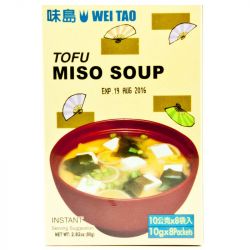
Sopa de miso con tofu (WEI TAO) 8 sobresx10g
8,89 €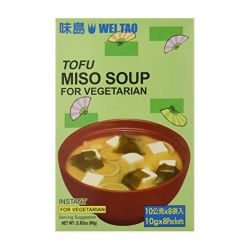
Sopa Miso Vegetariana (WEI TAO) 80g (8 sobres)
8,89 €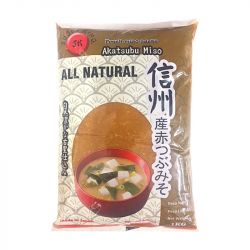
Miso rojo-akatsubu (SUSHI KING) 1kg
4,653,26 € (30,00 %)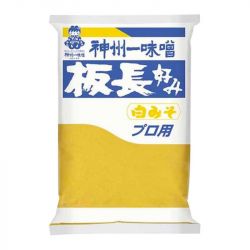
Miso blanco japones (MIKO) 1kg
4,99 €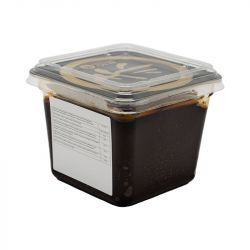
Pasta miso rojo (SHIH CHUAN) 500g
8,65 €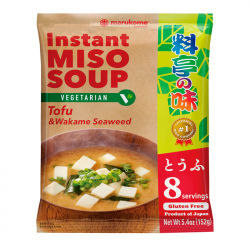
Sopa de Miso Vegetal de Tofu y Wakame sin Gluten Instantáneo 8 raciones (MARUKOME) 152g
4,09 €
© Diseño web imacreste
What is miso soup?
Miso soup is a traditional Japanese soup made from miso paste, dashi (broth) and additional ingredients such as vegetables, seaweed and tofu.
Miso means “fermented beans” in Japanese, an essential ingredient in Japanese diets. The origins of miso soup are believed to be in China, but the dish was introduced to Japan around 1300 years ago by Buddhists. It was made from fermented mixtures of salt, grains and soybeans to preserve food for months.
Since then miso has been a mainstay of Asian cuisine, featuring a variety of ingredients such as rice, sweet white miso from Kyoto, soybeans or barley.
Types of miso soup
- White miso (shiro)
Made from soybeans and rice, fermented for a maximum of two months. Shiro, which means white in Japanese, is light in colour and has a sweet but slightly salty taste. Shiro is a very versatile miso, it can be served with salads or stir-fried vegetables. - Yellow miso (shinsu)
Mild miso soup, in this case, is fermented a little longer than white miso. Yellow miso is suitable for a wide range of recipes. - Red miso (alias)
If you want a dark miso recipe, then red miso is the dish for you. Reddish in colour, this type is made with a higher proportion of soybeans, fermented for up to three years and has a much saltier, fuller-bodied flavour. Its full flavour is best used in hearty dishes such as stews and tomato sauces, though its flavour can dominate over. - Barley stew (mugi)
Made from barley and soybeans, mugi miso tends to have a longer fermentation process than most white misos, more like red miso. It has a strong barley aroma, but is still mild and slightly sweet in taste.
Samosas: what they are, where to buy them and how to cook them
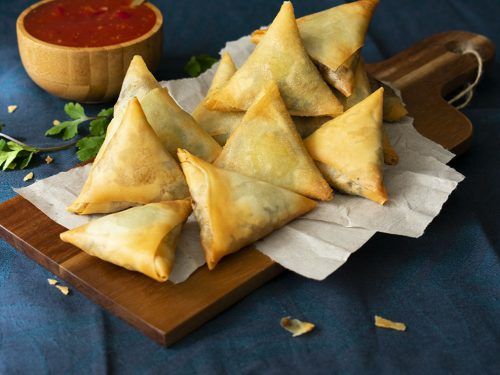
Samosa is one of the most popular dishes in India, Tibet and Pakistan. It is shaped like a triangular pastry and the filling varies according to the region. It is covered with puff pastry or filo dough and the inside is seasoned with curried potatoes, peas, shredded lamb or chicken and spices, among other vegetable combinations.
Sounds delicious, doesn’t it? Well, today at Oriental Market we bring you a guide to learn all about these popular Indian pasties.
Origins
The origins of samosas can be traced back to the Iranian plateau at the dawn of Iranian civilisation. It is not known for sure why it is moulded in a triangular shape, but it is known that the name samosas is descended from the Persians.
They came to India via the route taken by the Aryans more than 2000 years ago, through Central Asia and over the great mountains that are now Afghanistan, before reaching the plains of the great rivers of India. Later, the armies of the Mamluks, Tamerlane and the Mongols made the same journey, building the empire we now know as India. The land was reshaped by immigration and the samosa was transformed in its wake.
By the time samosa landed in present-day Tajikistan and Uzbekistan, it had become a raw peasant dish. It went from being an upper-class food to a staple food for working in the fields. It retained its shape and style, but the characteristic nuts and exotic fruits had disappeared. Instead, they were stuffed with coarsely chopped lamb, onioned and seasoned simply with salt.
Over the following centuries, the cake made its way through the Hindu Kush and the Indian subcontinent. It became a fusion of cultures and culinary influences, adapting completely to its environment.
Indian food introduced its own spices into the food: coriander, pepper, caraway seeds, ginger and more. They also changed the filling with vegetables replacing meat, making samosas a traditional Indian dish.
Today’s Samosas
Today, most samosas are filled with potato and spiced with green chillies, ingredients introduced in the 16th century by Portuguese traders. They are also served as cocktail canapés at celebrations in Delhi, while in Punjab, paneer, fresh cheese, is always added. They can be found in chocolate, as a snack and can even be cooked in a variety of ways: baked or fried.
However, samosas have spread beyond the borders of India to the rest of the world. In the West, they are often topped with green chillies, in Morocco they decided to stuff them with peas, while in Israel they added potatoes.
Buy samosas online
You can buy delicious samosas in our online shop.
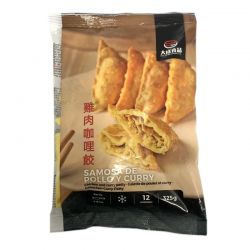
Empanadilla de Samosa Pollo y Curry 20pcs (DACHENG) 540g
9,19 €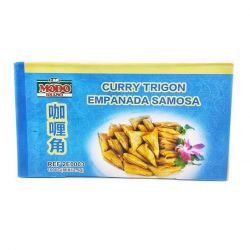
Empanada samosa curry (MODO) 1kg (80unx12.5g)
6,794,75 € (30,00 %)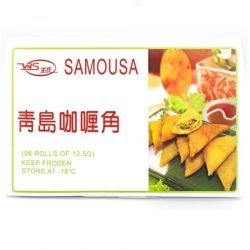
Empanada Samosa y curry (MODO). 96 uds 900g
4,95 €
© Diseño web imacreste
Types of samosas and fillings
Although the traditional samosa is triangular in India, many samosas are also made in a crescent shape, particularly in the Middle East, with curled and closed edges. They are also cooked in the shape of a cone or square, depending on the area.
There are many types of fillings, the most characteristic ones:
- Chicken samosas: popular in many parts of the world, are filled with chicken, spices, flour, sweet chilli, onion, garlic and lime juice.
- Lamb samosas: made of crispy dough, stuffed with lamb, flour, onion, seeds and spices (curry, turmeric, chilli powder, coriander).
- Vegetable samosas: the most common in India, made from flour and vegetables.
- Veal samosas: also traditional in India, each cook has his own particular filling, but usually beef, chilli, spices, flour, onion and garlic are added.
- Chocolate samosas: served as a dessert, filled with chocolate and cinnamon.
- Sweet banana samosas: served as a snack to enjoy between meals or for dessert.
How to eat samosas
- Step 1: Start at the corners! The most filling parts of a samosa are the hottest, so biting into the corners first allows the steam to be released and it cools down faster.
- Step 2: Blow from one side of the samosa towards the centre, after the corners have been eaten. This allows the steam to be released faster from the other side.
- Step 3: Be sure to enjoy all the flavours by chewing slowly. If you are eating them on a plate, open the samosa in half to better experience the fusion of colours and textures.
- Step 4: Save the centre for the last bite. It’s the perfect way to round off the experience.
If you liked this post so much that now you can’t resist wanting to try samosas, don’t hesitate to visit our online shop Oriental Market or visit our shop in Barcelona where you will find different options and varieties of this exotic delicacy.
Shichimi: what it is, how to use it and where to buy it
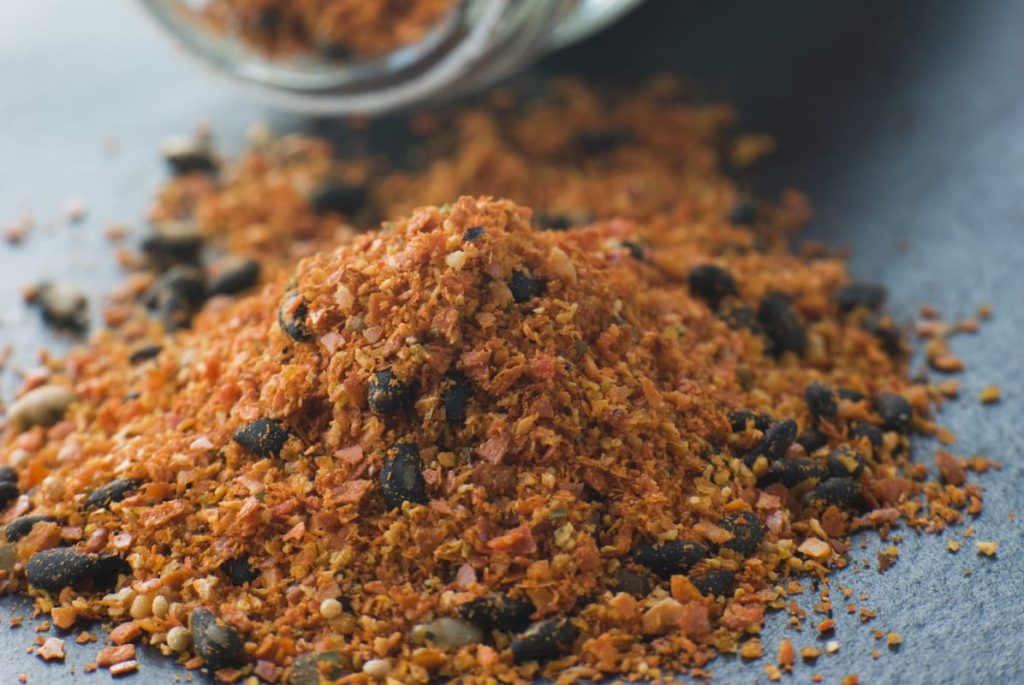
We often prepare our best dishes and, after a lot of effort and preparation time, when we taste them, we feel that something is missing.
In Spain we have some wildcard spices that can be used to enhance the flavours of dishes such as black pepper, garlic and onion powder, bay leaf, rosemary… However, in oriental cuisine they have a star ingredient to spice up their recipes and we are sure that once you get to know it, you will always want to have it in your pantry: shichimi. Today at Oriental Market we tell you all about Japan’s star condiment.
What is shichimi?
Shichimi tōgarashi, also known as “seven-flavoured chilli”, is a spice blend that originated in Korea. It is made up of elements such as red pepper powder (tōgarashi) and tangerine zest, which is why it has such an orangey colour. White or black sesame seeds, poppy seeds, hemp seeds, chopped nori seaweed and Sichuan pepper are also added. However, there are variations as in some places it is made with garlic and ginger.
All in all, shichimi can be defined as a mixture of traditional Japanese spices. They are all placed together in a jar, underground, and lactic acid bacteria grow and ferment. After this process, the shichimi develops its own flavour.
Where to buy shichimi
Due to the boom in Asian cuisine in recent years, shichimi has become available in more and more supermarkets. Today, it is possible to buy this product both in large supermarkets and in specialised shops such as Oriental Market.
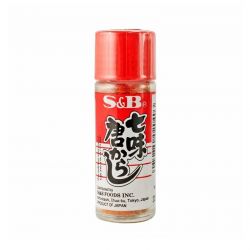
Siete Especias - Nanami Togarashi- Shichimi (S&B) 15g
2,49 €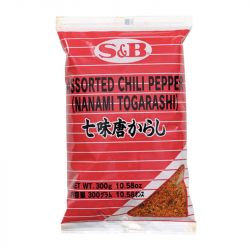
Siete Especias Shichimi Togarashi (S&B) 300g
6,79 €
© Diseño web imacreste
Origin
In the past, it was shichimien at home and left to rest in the fridge, but nowadays it is usually bought in supermarkets. It is mainly used to flavour soups, white meat dishes and various rice dishes.
All seven ingredients are used to prepare it, especially Sichuan pepper, which adds a different but delicious taste to the dish, particularly to grilled meats, pastas, rice dishes and soups. Its spicy flavour is diluted by the fruity fragrances, while the combination of ginger and Sichuan reinforces the aroma.
The origins of shichimi go back at least 400 years. It is believed to have been created in the 17th century by apothecaries, just as chilli began to be introduced to Japan as a new form of medicine.
Korean ancestors wanted to achieve a balance between health and nutrition, so they decided to make shichimi to incorporate the nutrients of fresh vegetables even in the colder seasons.
What are the benefits of shichimi?
The nutritional values of shichimi tōgarashi are linked to the raw materials and ingredients used. Therefore, this food has different properties derived from all its components:
- Sichuan pepper: helps with nasal congestion, blood circulation, reduces muscle pain and facilitates weight loss.
- Sesame seeds: they are high in vitamins and minerals and help prevent diabetes, and are excellent for the heart and lungs.
- Ginger: aids digestion, reduces joint pain and prevents colds.
- Nori seaweed: has a high iodine and iron content, ideal for improving thyroid and red blood cell production.
Types of shichimi togarashi
Brands and restaurants have decided to get creative with shichimi and have added their special ingredient. If you are someone who likes to explore the taste of different spices, you should try the many variations of shichimi. Here are some of the most popular types of shichimi togarashi:
- Yuzu shichimi togarashi: yuzu is a type of citrus fruit that is common in East Asia, it features a sour and aromatic taste. In Japan, yuzu is very popular, it can be found in any kind of dish or drink. In this case, yuzu shichimi has a spicier taste. Due to the citrus aroma, yuzu shichimi can be a great condiment for salads.
- Sansho shichimi togarashi: sansho is a Japanese pepper. Specifically, sansho shichimi uses more Japanese pepper to achieve a more intense flavour, compared to traditional shichimi. Some brands also add perilla leaves to amplify the aroma of sansho shichimi. This type of shichimi is mainly used to sprinkle on top of fried or grilled food.
What can you eat with shichimi togarashi?
There are several ways to consume shichimi. The best way to enjoy this seasoning is in noodles, e.g. udon, ramen or soba. Also, dishes containing soups or sauces such as boiled tofu and gyudon, or meats such as yakitori, grilled chicken. It also goes well with soups, side dishes and main dishes.
Shichimi has many options, it can be added to a sauce, broth or even plain rice, it can be sprinkled on almost anything. Usually, shichimi togarashi is combined with Japanese food. But of course, it is also compatible with many western cuisines such as: fried chicken, Chips, barbecue, soup, salad, popcorn and many others. It really depends on how you want to enjoy your food and how creative you are in using shichimi.
Best Japanese restaurants in Murcia
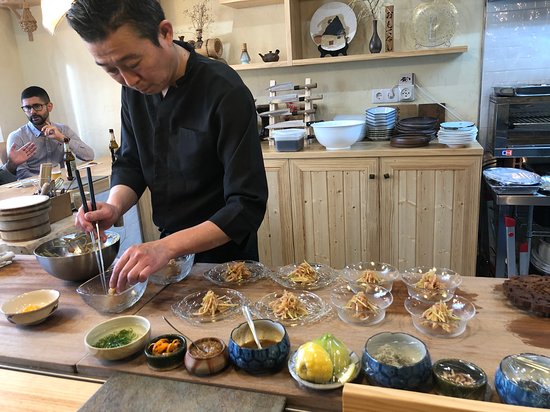
Murcia is also jumping on the bandwagon! The interest and passion for Japanese culture has a place in the city of Murcia. Many restaurants have made a place at the table for nigiris, makis, tartares, mochis and other irresistible dishes! The baroque architecture and its avant-garde movement combine in perfect harmony with Asian cultures, in particular the Japanese, popular for their respect for the planet, generosity and honesty in their relationships. Japan’s mentality is here to stay, bringing added value to Western culture, fusing food, disciplines and leisure.
Here is a list of the most popular restaurants in the capital:
List of the best Japanese restaurants in Murcia
Specialising in bluefin tuna: Enso Sushi
C. Sta. Teresa, 6
Telephone: 968 90 66 11
If you are a fish fanatic this is your place! Antonio Bernal, owner of Enso Sushi, brings to Murcia his love and passion for the Japanese country, specifically for its red tuna. He specialises in its execution and preparation, offering in his restaurant quality raw material, with a variety of more than 20 sashimi-style fish. The restaurant has been awarded the Certificate of Excellence between 2016 and 2019, an award achieved thanks to the more than 400 opinions rated as “excellent”. Its knowledge of Japanese culture and gastronomy makes Enso Sushi one of the most essential places in the capital to try its tuna tataki, salmon tartar or moriawase sashimi, among other dishes.
For lovers of traditional sushi: Izakaya Okina
C. Andrés Baquero, 9
Telephone: 968 11 88 24
Ready for a Japanese experience? The Izakaya Okina restaurant takes care of all the details to make spectacular sushi. The dishes are great value for money. We recommend: tuna tartar, ramen, miso soup, octopus balls and bluefin tuna nigiri. A family-run place, ideal for enjoying the meticulous Japanese cuisine prepared by the chef, who has acquired his knowledge of Asian gastronomy on the spot. Izakaya Okina brings Japanese food to the capital to delight customers with flavours and textures originating in Japan.
Gastronomic elaborations: Kokoro Gastro Sushi
Av. de la Libertad, 6
Telephone: 868 07 70 00
Young restaurant, with values and climbing the steps? Kokoro Gastro Sushi is a personal project carried out by chef Álvaro Sevilla, and in just over two years it has become one of the best Japanese restaurants in the capital. They present their 4 essential pillars: raw material with exquisite quality, paying special attention to fish; they combine traditional and modern techniques; they fuse Japanese cuisine with Mediterranean, Peruvian, Chinese and Thai among others and finally, they want to convey to their customers the message and meaning of their cuisine. They bring to the table not only a dish, but also an experience, preparing meals from scratch, reinforcing the idea of Kokoro as a gastronomic restaurant.
Japanese technique and tradition: Kappou Makoto
C. Historiador Juan Torres Fontes, 20
Telephone: 627 65 67 67
Dexterity and skill in a single mouthful! Chef Makoto Himeno prepares each dish with Japanese technique and tradition, taking care of every detail and cooking with top quality fresh products. The experience lasts a couple of hours and consists of an 8-course surprise menu, although it can also vary in exceptional cases, the chef will have no qualms about adapting to the client’s needs. Kappou Makoto is a restaurant in high demand for its culinary precision, Makoto Himeno fuses different types of meat, rice, vegetables and fish to create traditional Japanese dishes. The place is small but cosy, decorated according to the guidelines of Asian culture.
Green and innovative sushi: Green Sushi
C. Merced, 3
Telephone: 968 96 73 64
Sushi for everyone! Inexpensive, high quality and good service. Ideal for beginners as amateurs of Japanese food. Green Sushi is the trendy restaurant in Murcia, with a wide variety of dishes, although we recommend above all the eel sushi, nigiri with lime, gyoza gratin and tiramisu maki for dessert. They also play with the surprise factor, presenting dishes off the menu for those customers who want more! If you want to spend a quiet evening at home, no problem, Green Sushi has a great delivery service, ideal for birthdays, celebrations and events.
Unbeatable quality – unbeatable price: Terra Sushi Murcia
C. Navegante Juan Fernandez, 8
Telephone: 968 96 74 93
Do you want to eat good sushi at a low price? Then Terra Sushi Murcia is the place for you! In this restaurant you can try tuna temaki or spicy salmon, coconut mochi, salmon tartar with avocado, foie maki, butterfish sushi, truffle and many more… They also offer home delivery service with some special promotions up to 10%. A place with few tables but with a wide variety of dishes. They cook with very good quality fish at one of the best prices available.
Irresistible sensu rolls: Sensu sushi
Av. Juan Carlos I, S/n
Telephone: 674 97 19 35
A wide variety of dishes to choose from! At Sensu Sushi the pieces do not go unnoticed, it is suggested to taste the Asian combinations from the terrace or from the comfort of the interior of the restaurant. We recommend trying the sensu roll, the house speciality, as well as the most popular dishes: duck uramaki and sensu dragon. To delight the palate and accompany the food Sensu Sushi has an extensive wine list. Prices and personal attention are excellent. The chef always manages to create original pieces to leave you wanting more, so what are you waiting for?
Murcia is another example of the popularity of Japanese cuisine. From Oriental Market, we supply many restaurants in Murcia with products such as sauces, sake, seaweed, mochis or miso, which come directly from 14 countries on the Asian continent and which you can find in our online shop so that you can enjoy all the flavour of the Orient without leaving home.
Typical South Korean food
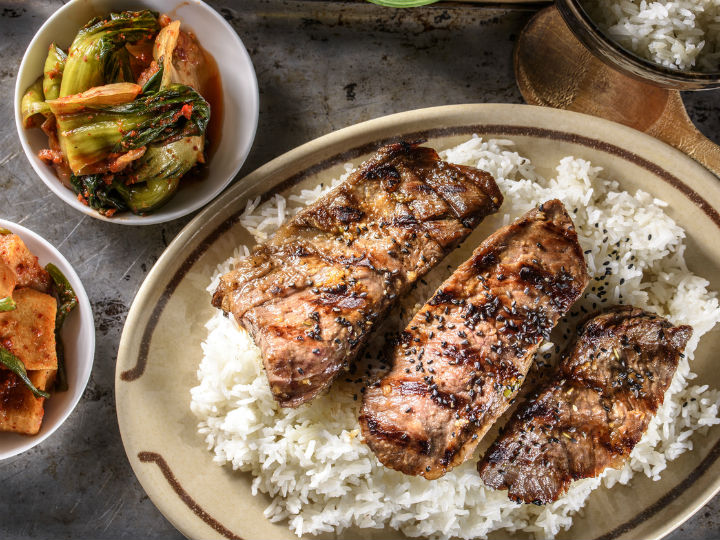
Climbing the ladder! South Korean food, one of the most popular in the world, is gaining more prominence thanks to the films Parasite and Squid Game, popularising squid dishes, whether in batter, ink, rice, stew… as well as other foods such as the famous Dalgona sugar biscuit, sweet plum tea or ram-don, the ramen-like noodles with meat.
But beyond the big screen, Korean food and medicine have always gone hand in hand. Their basic principle is to use medicine as a last resort, only if food fails. Therefore, food plays a very crucial role in their culture. They often ferment many foods, which can take months or years, a process that is characteristic of their gastronomic tradition.
Here are the most typical dishes in South Korean cuisine:
1- Kimchi
Kimchi is one of the oldest and most essential dishes in South Korean cuisine. Indeed, dinner is considered incomplete without this dish on the table. The history and tradition that precedes it give it great cultural value. It is a food composed of fermented vegetables with a bitter and spicy touch in every bite. The main ingredient is cabbage, followed by other vegetables, red chilli flakes and sometimes accompanied by rice. The dish has great nutritional value and anti-cancer properties, and its popularity extends even to foreigners for its unique taste.
2- Samgyeopsal
For pork lovers… This is the dish for you! Samgyeopsal is one of South Korea’s favourite foods. It consists of grilling slices of pork belly. The meat is bathed in salt and pepper, mixed with oil, sesame seeds and then wrapped in lettuce along with garlic slices, chilli paste, traditional and green onions and kimchi as a garnish. All in all, a recipe with a lot of flavour thanks to the accompanying ingredients.
3- Bulgogi
The 23rd most delicious food in the world! According to a survey conducted by CNN Travel to its readers, during 2011 bulgogi was ranked as one of the most delicious Korean meat dishes. It consists of grilled marinated beef, although it can also be prepared with chicken by slicing it into thin strips. The beef is usually wrapped in lettuce and served with ssamjang, a thick red paste.
4- Sundubu-jjigae
Spicy and delicious! Sundubu-jjigae is a typical Korean stew, presented in a stone bowl for better tasting. The dish is made with: tofu, vegetables, mushrooms, beef or pork, seafood and chilli paste. Depending on the area and the restaurant, some ingredients vary in their preparation, but despite these minor modifications, most dishes place a raw egg on top of the stew, which is mixed with the soup before consumption. It is a very tasty and hearty meal, ideal for Christmas meals at this time of year.
5- Hotpot Mixed Rice
Mixed rice salad? Bibimbap Dolsot is a tasty and hearty dish, typical of Korean cuisine, consisting of a rice base and different stir-fried ingredients: vegetables, egg, toasted seaweed flakes and decorative sesame seeds. More gochujang chilli paste is added to taste, depending on how salty the rice is desired. The salad is served in a hot pot, ideally mixing all the ingredients together on the spot and enjoying each bite with a crunchy texture.
6- Hobakjuk
Korean agriculture and cuisine have brought to the table one of the most delicious and lightest dishes to eat… we are talking about hobakjuk! A Korean porridge made of steamed pumpkin and glutinous rice, previously soaked in water. Don’t be fooled by its appearance, this is an ideal breakfast food, even for a lighter diet, its sweet and delicious taste melts in every bite. It can be served either hot or cold, depending on the season.
7- Japchae
Have you ever seen translucent noodles? Japchae is a very popular dish from South Korea. It is cooked stir-fried with sweet potato, vegetables, beef, a touch of soy sauce, sugar, carrots, onions, mushrooms, beef and cucumbers. These ingredients vary according to the chef. The noodles are fried in sesame oil and toasted seeds on top, creating a sweet and savoury aroma, with a light and soft texture. Japchae is usually served as a side dish for lunch or dinner.
8- Kimchi stew
Tradition is served in a healthy way! Kimchi stew is undoubtedly one of the most traditional and essential dishes in Korean cuisine. Its spicy and sour taste leaves you craving for more. It is made with different types of Kimchi, fermented vegetables, but the most common is cabbage, also boiled with pieces of pork and other seasonings. It is a food with great nutritional value, high in fibre and low in calories. The stew has a mixture of intense and delicious flavours. For Koreans, it is a dish with great cultural value, so it can be found in any restaurant at a reasonable price.
9- Spicy stir-fried octopus
Octopus… It’s a great health benefit! For centuries, octopus has been one of the most popular dishes among Koreans. It is a low-calorie food and is believed to generate more energy and stamina to get through the day. Nakji Bokkeum, served spicy in dishes, is often accompanied by soups to soothe the taste. The octopus is minced with onions, cabbage and carrots, mixed with a marinade of red pepper paste, soy sauce, garlic, salt and sugar, and then stir-fried together.
10- Hoeddeok
Pancakes ready to go! Hoeddeok are typical South Korean street food pancakes. It is a very popular food, especially in the winter season. Crunchy on the outside and tender on the inside, this dessert is sweeter than the Western version, in the form of a circular dough filled with cinnamon, honey, brown sugar and small pieces of peanuts, cooked on a griddle.
Best Japanese restaurants in Zaragoza
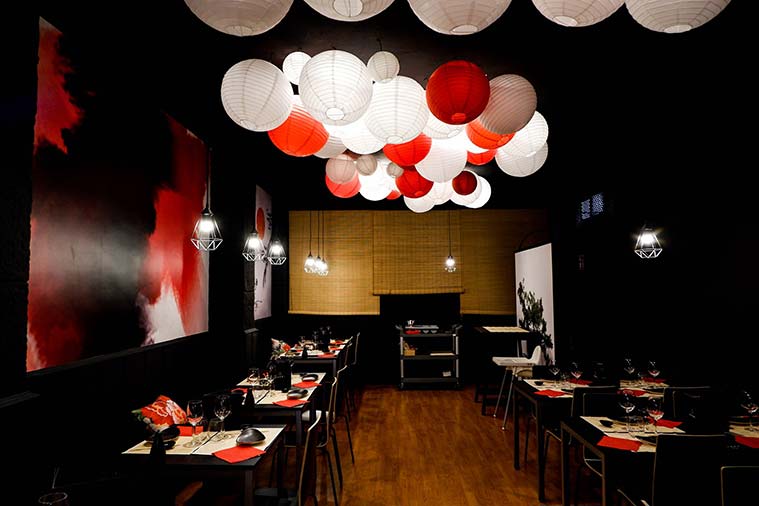
Aragon has not been spared the boom in Japanese gastronomy in Spain either. Its capital, Zaragoza, is home to numerous options in its streets where you can sample the most outstanding relics of Japanese cuisine. Ramen, sushi, tartar, gyozas, bao…. The best Japanese dishes prepared with the best Aragonese produce, can there be a better combination?
Here is a list of the 7 best restaurants that will make you travel to Japan through your taste buds.
List of the best Japanese restaurants in Zaragoza
Mediterranean and Nikkei fusion: Uasabi
C. Cuatro de Agosto, 18, 50003
Telephone: 976 39 47 66
The Uasabi restaurant offers a unique menu fusing Nikkei cuisine with touches of Aragonese gastronomy. It has a sushi bar for more informal meals, where you can choose different tapas of the day prepared in the Japanese tradition. On the other hand, if you prefer to enjoy a more sophisticated evening in the capital, Usabi also offers a wide variety of top quality fresh dishes such as bull sashimi, Norwegian tuna or salmon, bluefin tuna tartar, prawns in panko or kabayaki eel.
A love story of Japanese culture: Ronin
C. José Sancho Arroyo, 14, 50002
Telephone: 648 48 70 92
Climbing the stairs! Ronin restaurant started as a humble project of Japanese cuisine in a house in Zaragoza. The owner prepared Japanese dishes for his friends, showing his appreciation and interest in the culture. Shortly after, he changed location to expand the business to what is now known as Restaurant Robin, exclusively for members, a place specialising in the gastronomy and culture of Japan, taking care of every detail in its preparation and service to offer a full experience in the Asian tradition.
Japanese essence: Bokoto
C. Jerónimo Zurita, 19
Telephone: 976 79 44 05
A place with a Japanese soul… Every gesture counts, that’s why Bokoto is committed to the planet, being responsible for the environmental impact and ensuring the health and wellbeing of society. These values reflect the care and respect for everything that surrounds us, attributes that characterise the history and essence of Japan.
The restaurant has an extensive menu, with both traditional and innovative sushi, adapted to avant-garde cuisine. We recommend trying their fantastic tasting menu with typical Japanese dishes, without forgetting their surprising “sushi boxes”. Do you dare to open them?
Cocktails and sushi: Ginger Fizz Bar
C. Joaquín Costa, 16
Telephone: 672 722 332
Cocktails and sushi? there is no better combination! Ginger Fizz Bar, famous for its classic cocktails and mixed drinks, offers a unique experience with Japanese food. The menu offers a wide variety of top quality meat and rice dishes: toro or salmon tartares, poke to choose from, tuna ceviche, sea bass or sea bass sashimi, their famous dragon roll or ginger roll and for dessert fruit sashimi among other exquisite sweets. Ginger Fizz takes care of its interior, creating an elegant and quiet place decorated with an aesthetic focused on vegetation and play of lights ideal for enjoying a cool dinner in the capital.
A tavern that breathes innovation: Naoki
C. Miguel de Cervantes, 10
Telephone: 638 58 14 42
Naoki is a Japanese restaurant inspired by the typical Japanese taverns, also known as izakayas. However, they wanted to go a step further and give a 360º turn to the most traditional dishes. Thus, in their menu you will always find the best-known Asian recipes, but with a special and distinctive touch that shows the innovative character of the brand. Whether it is at home or on the premises, whatever the case, their combinations will not leave you indifferent.
The best menus: The Bund meeting
C. Luces de la Ciudad, 25
Telephone: 976 05 14 14
The raison d’être of this restaurant is the fusion and combination of flavours and textures. However, the highlight of its menu is undoubtedly the daily set menus, which include numerous starters to share and all kinds of options to try, including vegan and vegetarian.
So, as its name says, El Encuentro, what better meeting could there be than to get together with your family or friends to share your passion for Japanese cuisine and culture?
Specialising in Ramen: Senbazuru
C. del Heroísmo, 39
Telephone: 876 950 231
Do you know the legend of Senbazuru? According to an old Japanese story, the person who manages to make a thousand paper cranes will get a wish that will grant him a crane. And this wish can be anything, such as surviving a deadly disease. Because of this story, cranes started to be considered as a symbol of peace, and that is why this restaurant decided to capture all this symbolism in its dishes.
Senbazuru is committed to homemade, local cuisine and the best quality products on the market. Although it is true that their speciality is ramen, they also offer all kinds of traditional Japanese dishes worthy of being served in the best izakayas in Japan.
Typical Chinese food
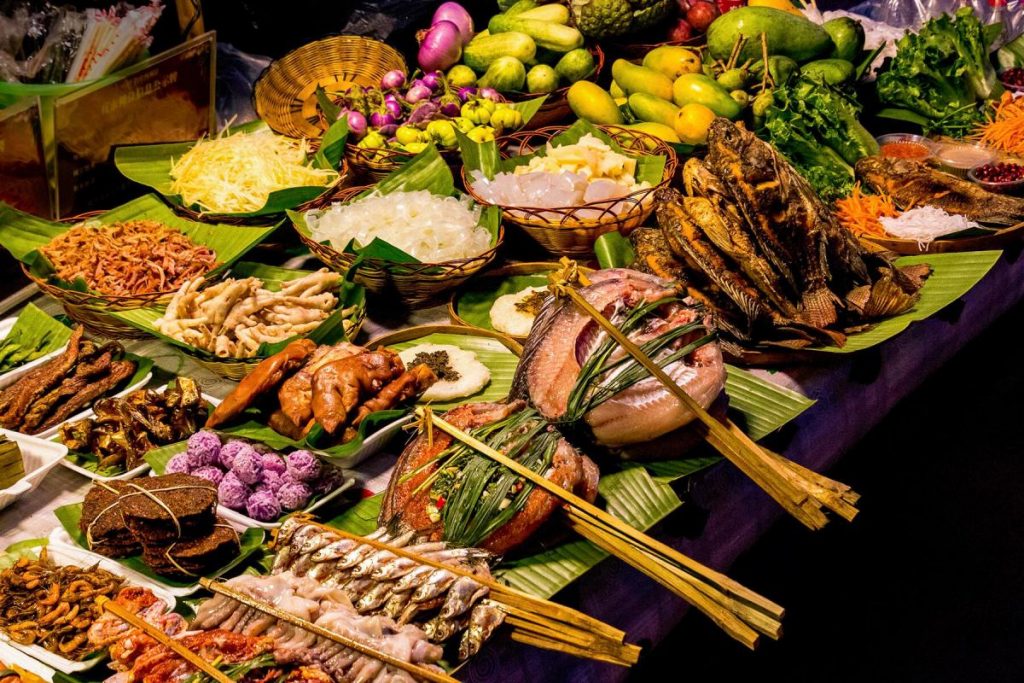
A well-known Chinese epithet says: “Food is heaven” and how right it is! Chinese cuisine is one of the oldest in the world… with more than 4 millennia of history and tradition, it evolved into a unique gastronomy, growing and expanding until today. Famous for rice and exotic food, its techniques have been perfected to offer exquisite dishes with a strong cultural identity. Some of the foods have particular meanings, the most prominent of which are: good luck, togetherness, commemoration and best wishes.
Hot pot
The hot pot is all the rage in the city! Hot pot, a food originating from northern China, is served in many restaurants and symbolises good luck and prosperity. Why has it become so popular over the past year? Customers are part of the experience, they choose the ingredients, add them to the pot and cook over medium heat until they are ready. The Hot Pot consists of a flavoured broth: original, spicy, mushroom or tomato. In addition to the meat, the accompanying sauce and the cooked vegetables.
Peking Duck
One of the most prestigious and representative dishes is Peking duck, crispy on the outside and tender on the inside, known in some places as “heaven’s delight”. It was first cooked during the imperial period in ancient China, about a thousand years ago. In the late 19th century this dish was moved outside the palace walls for popular enjoyment. Peking duck is made from high quality meat, roasted over charcoal or wood fire and served in thin slices with tortillas, sweet beans or soybeans.
Fried rice
Tired of preparing complicated food? Then your ideal dish is fried rice, cooked in three different specialities. The first is Yang Zhou fried rice, one of the most characteristic, it has earned its own name in Chinese cuisine. The accompanying ingredients are: peeled shrimps, diced ham, scrambled eggs, carrots, mushrooms, bamboo shoots, corn and green beans. Once the rice is cooked, its aroma is brought out and it is stir-fried to a golden-yellow colour. On the other hand, there is Cantonese fried rice, stir-fried with minced garlic, ham and corned beef. Finally, Fujian fried rice is made with chicken, mushrooms, shrimp, carrots, scallops, egg, tomato and starch.
Spring rolls
Ready for Chinese New Year! Spring rolls have long been eaten at this celebration, marking the end of winter and the beginning of spring. The rolls have a crunchy texture, with a sweet or savoury filling inside. For the sweet filling, they are wrapped with a sweetened bean paste. The savoury filling consists of lettuce, shredded pork, bamboo shoots and mushrooms.
Sweet and sour pork
Can’t decide on just one flavour? This dish, popular in Shanghai, combines sweet and sour flavour with a glossy, gelatinous texture. The main ingredient is pork, but some restaurants change the option to chicken to offer more variety on the menu. What makes this dish stand out from the rest is the breading: it is lightly coated in flour and then fried for an extra layer of crispiness. The easy-to-prepare sauce is composed of: soy sauce, tomato, pickled rice, honey, cornstarch, and finally, water and cornstarch, which together create… an irresistible thick and juicy texture!
Kung Pao Chicken
The famous Kung Pao Chicken, a Sichuan speciality, is an irresistible dish with a fresh and spicy taste. There are two different versions: the original and the westernised version. The original recipe is made with diced Gong Bao chicken, fresh, moist and unroasted peanuts or cashew nuts. The peanuts are first poured into the bottom of a wok with hot oil, then fried until golden brown, and finally the other ingredients are added. In the western style, cornstarch, vegetables, sweet and sour sauce and garlic puree are added.
Wonton
From tradition to the plate… Wonton is a food that originated in the Tang Dynasty in northern China, but today it has become popular throughout the country. It is most commonly eaten during the winter solstice. How is it prepared? With the palm of the open hand, place the thin dough and add a small amount of filling in the centre, then seal the edge with your fingers. They are usually boiled and served in hot soup or fried. They are similar in shape to tortellini, but a little more rectangular. The filling can be meat, either pork or chopped shrimp, or vegetables.
Dumpling
Dumpling, similar to Wonton, are Chinese dumplings with a history and culture of 1,800 years. In the northern part of China, they are prepared and eaten on Chinese New Year’s Eve. The most characteristic are those with beef and carrot filling, as well as lamb and carrot, pork with onion and mushrooms sautéed with eggs. They can be boiled, steamed or fried.
Ma po tofu
Homemade and easy-to-cook food! Characteristic of Chengdu, the capital of Sichuan, Ma po tofu is one of the dishes with a tradition of more than 100 years. Its food became popular in 1862, following a small restaurant operated by Chen Ma Po, people liked the tofu so much that they nicknamed it Ma po tofu. Its spicy flavour of chilli and pepper combined with tender tofu sautéed in a bean base, bright red beans, minced pork and chopped green onion create a tasty and exquisite dish for all palates.
Chow mein
Chow mein means “stir-fried noodles” in Cantonese pronunciation. To make this dish you need: noodles, chicken, beef or pork. Shrimp can also be used, as well as a variety of vegetables such as carrots, onions and celery. The noodles, whether flat or round, should be boiled for a long time and then, once cooled, can be sautéed with the rest of the ingredients.
Moon cake
The quintessential Chinese dessert! Gastronomy and tradition come together to create the mooncake, served during the Mid-Autumn Festival. It symbolises wholeness and togetherness, which is why it is eaten during this celebration, reinforcing the concepts of prosperity and family reunion. The cakes are round, small and filled with a variety of ingredients, packed in designer boxes and given as gifts to family or friends. The dessert measures around 5-10 cm, most have a puff pastry skin with sweet fillings and are served alongside Chinese tea.


